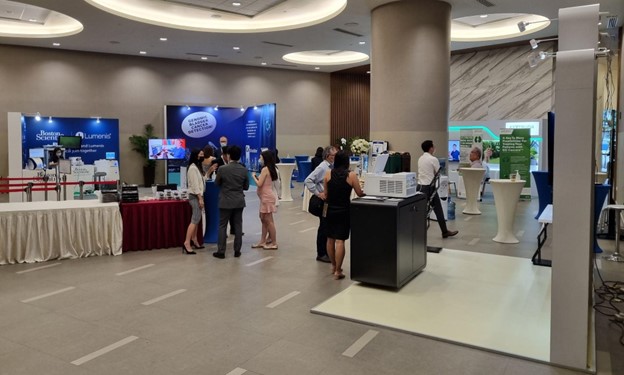 19 Sep 2024
19 Sep 2024
Must-know Tips for Exhibitors At Trade Fairs in Singapore

A trade fair is a major event organised to bring together members of a particular industry to exhibit their latest products and services to the public over a few days. You’ve probably been to a few trade shows, both big and small, in various convention centres either in Singapore or another country. Smaller trade fairs may also be held from a local arena or hotel, allowing area businesses to connect with potential customers.
Participating in such an event is a quick way to build your reputation among your target audience, but if only it was as easy as showing up and talking to passers-by. It takes a good deal of planning, preparation, and strategy to put yourself out there amidst a sea of competitors. But, with the right mindset and some helpful tips under your belt, you might have a little more luck than your competitors.
Preparing for the Trade Fair
Setting your goals
It’s also a good idea to have actionable goals that you and your team can work towards. It can be as simple as generating 50 leads each day throughout the trade fair, to selling at least 100 of your products per day. This gives you a measurable form of goal-setting backed by realistic expectations. You can (and should) fine-tune these actionable goals, too: if your first day was an unexpected success, you could increase your goal by a small, workable amount and see how it goes the next day.
Researching the competition
The simplest way to do it is to look up their online presence. Leaf through their website, blog articles, and even their social media. This way, you’ll know how they create their content and how they engage and keep in touch with their customer base. You might also pick up on what they may be looking for while boothing at the trade show. All of this can be very helpful in fine-tuning your strategy – especially when your competitors are probably doing their homework about you, too!
Why not collaborate?
It’s a nice win-win scenario for both parties, but it does feel somewhat idealistic. Regardless, it’s a strategy that’s still worth considering as long as you can iron out the details with your competitor.
Designing an attractive booth and promotional materials
You can even get creative by adding some simple game booths where visitors have a chance to win small prizes or set up an Instagram-worthy photo booth.
Engaging with Visitors
Being knowledgeable and approachable
The trick here is to engage them without intimidating or overwhelming them. If you know the right product for them, talk to them about it – again, be mindful not to force them into buying it. Let them ask you questions about the product; if it’s possible, demonstrate the product to them so they can see it for themselves. Let them give it a try, too: even something as simple as that can help to convince a customer to buy your product.
Offering interactive experiences and demonstrations
Make sure you tailor the use of these interactive experiences to your branding principles and marketing approach. Ideally, it will help lead them to how you provide a product or service that they would want or need.
Collecting visitor information
Whatever your lead capture strategy is, make sure your staff know how to capture lead information for every visitor who’s willing to fill out the form. Your lead management systems also need to be aligned to accurately capture attendee information before they’re sent to your sales team.

Maximising ROI
Measuring success with metrics and analytics
When presenting the results of your trade fair boothing, provide a summary that highlights the most important details first: things like your lead captures and new customers. Make sure to include simplified charts and graphics that illustrate the outcomes of the trade fair. You can also add visual aids to better communicate your message to management.
Following up with leads and building relationships
It also can be a good opportunity to solidify your relationship with them, even with those who’ve bought from you. Loyal customers can do plenty of good for your business down the line!
Post-fair evaluation
Looking to make your mark at trade fairs?
Aspen Event Planner can help you brainstorm a comprehensive trade fair strategy, ranging from your booth setup to the use of technology and revamping your marketing materials. We can breathe plenty of life into your boothing plan while you focus on marketing yourself to potential clients. Contact us today and let us help you build your trade fair presence!


